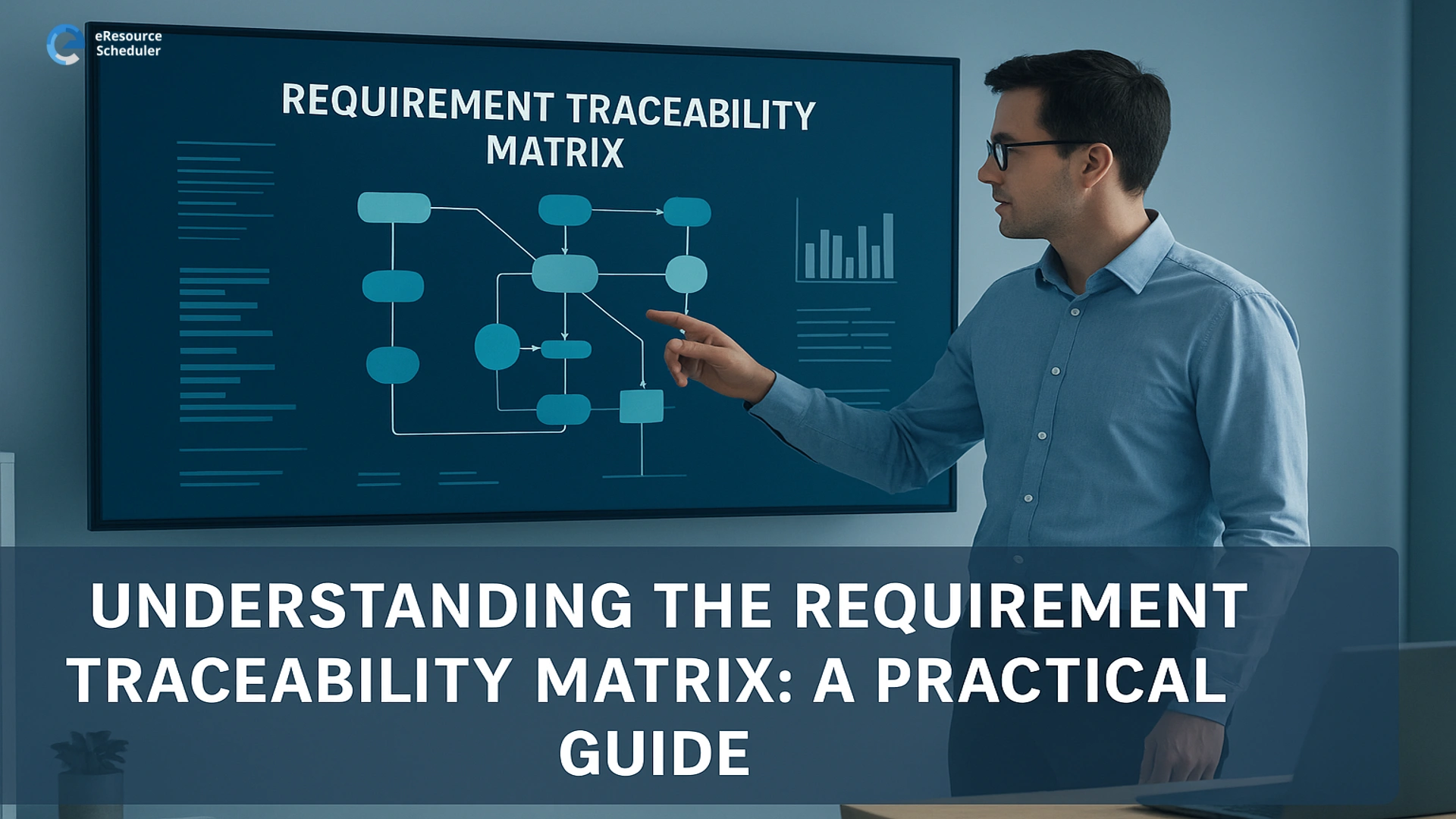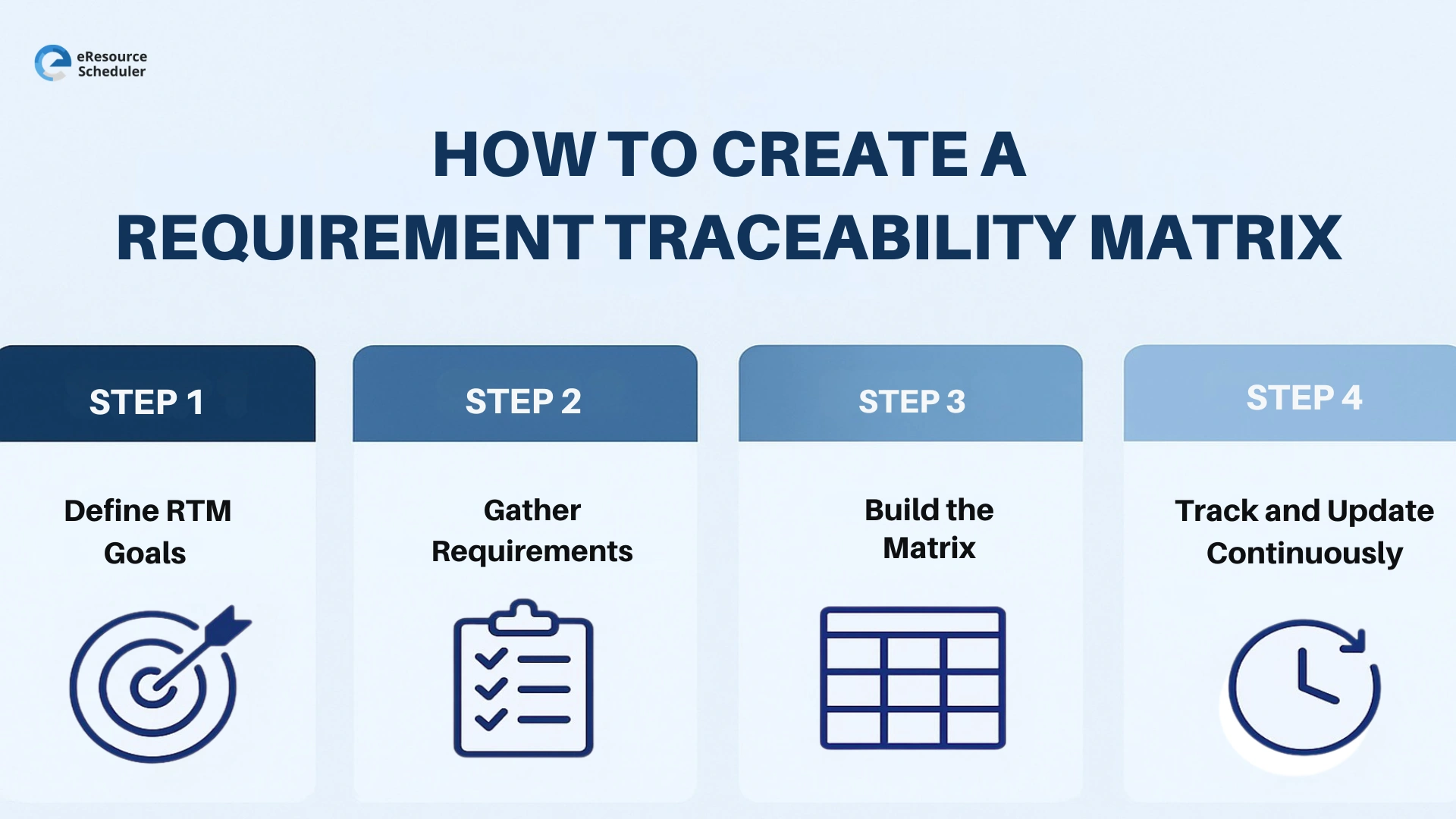
The Standish CHAOS Report found that 71% of software projects fail due to poor requirements management. Extend that beyond IT, and the number likely shoots up. The fallout? Wasted investment, delayed delivery, frustrated teams, and unhappy clients.
Project managers often shoulder the blame: “We didn’t have full details”, or “Requirements kept changing”. But the truth is, in any dynamic business environment, requirements will change. The real question is, how do you manage those changes without derailing the project?
That’s where a Requirement Traceability Matrix (RTM) steps in. And when paired with a workforce capacity planning software, it becomes the backbone of clarity, accountability, and precision across teams.
A Requirement Traceability Matrix is a structured document, often a table or chart, that records every project requirement and links it to its corresponding test, validation, or deliverable.
Think of it as the project’s audit trail. It tracks each requirement from inception to delivery, ensuring nothing slips through the cracks. For project managers juggling shifting requirements and multiple stakeholders, the RTM acts as a stabilizing anchor, capturing every change and ensuring full alignment.
Organizations use an RTM to:
In sectors like software, manufacturing, and healthcare, an RTM ensures that what’s built actually meets what was promised, every function, every feature, every standard.
An RTM isn’t just documentation; it’s a control mechanism. Here’s what it helps you do:
There are three main types of traceability in project management, each serving a unique purpose:
Links requirements to test cases or deliverables. It ensures that every requirement is validated in the final product.
Example: A running shoe brand promises a 2% performance boost. Forward traceability ensures every design element contributes to that measurable goal.
Maps test results or deliverables back to the original requirements. This prevents unnecessary scope expansion.
Example: In recipe formulation, a new flavor is tested backward to identify every ingredient, step, and supplier involved in achieving that taste.
The best of both worlds, requirements and test cases are interlinked both ways. It ensures nothing is missed and all changes are captured. For high-stakes projects, bidirectional traceability is the gold standard.
While every RTM may vary slightly, these components are non-negotiable:
Some organizations add optional fields such as the requesting department, project objective, or design status.
A well-built RTM is a project manager’s quiet superpower. Here’s why:
Mapping requirements to deliverables keeps everything aligned with scope and timelines. It prevents scope creep and helps assess whether each demand fits within realistic deadlines.
By visualizing dependencies, the RTM shows how changes in one requirement impact others. This foresight boosts planning accuracy and reduces surprises.
The RTM serves as a single source of truth. It captures progress, errors, and outcomes, making it easier to troubleshoot, present findings to clients, or reuse insights in future projects.
RTMs clarify what’s being tested, why, and how. Every bug or failure is documented, improving reliability and reducing future defects.
Because it’s accessible to all stakeholders, the RTM reduces miscommunication. Everyone knows who’s responsible for what, making accountability crystal clear.

Clarify why you’re building it. Is it for compliance, testing accuracy, or customer alignment? The clearer the goal, the better the structure.
Collect all client and stakeholder requirements through discussions, documentation, and expert inputs. Be specific about purpose and functionality because ambiguity kills traceability.
Use templates or dedicated tools. You can even create one in Excel, but manual updates are error-prone. A resource manager software can automate this process and maintain real-time accuracy.
An RTM isn’t static; it’s a living document. Update it as requirements evolve, new tests are added, or deliverables shift. Regular reviews ensure traceability and alignment throughout the project lifecycle.
Want to amplify the benefits? Pair your RTM with workforce capacity planning software. Here’s why this duo is powerful:
Integrating RTM with a planning tool connects requirements with the resources assigned to them. This gives managers a complete view of who’s doing what, where capacity is maxed, and where gaps exist.
With both systems connected, it’s easy to match skills and availability to requirements. If a testing phase needs a data analyst and you’re short on one, the system flags it early, letting you reassign or hire in time.
RTM integration helps teams allocate the right people for each task and avoid double-booking. The result? Higher efficiency and faster delivery.
You can detect bottlenecks before they blow up. If one engineer is overloaded, the system highlights it, allowing reallocation before burnout or quality dips occur.
All teams, from dev to QA, see what requirements are tied to which resources. Transparency drives accountability, and accountability drives results.
eResource Scheduler (eRS) takes this concept further. This cloud-based resource manager software offers Gantt chart views, skill-based allocation, real-time utilization tracking, and cost forecasting.
When synced with your RTM, eRS transforms project oversight, letting you monitor capacity, track progress, and adjust resources instantly. Whether it’s testing timelines or compliance-heavy documentation, eRS ensures every requirement has the right person behind it.
A Requirement Traceability Matrix doesn’t just document, it delivers discipline, transparency, and control. And when paired with intelligent tools like eResource Scheduler, it unlocks complete project visibility.
If your goal is flawless delivery, smarter planning, and balanced workloads, it’s time to go beyond spreadsheets. Book a quick demo of eResource Scheduler today and see how it turns traceability into tangible project success.
1. What is the main purpose of a Requirement Traceability Matrix?
It ensures every project requirement is tracked, tested, and verified from start to finish, eliminating gaps and miscommunication.
2. Who should maintain the RTM in a project?
Usually, the project manager or QA lead manages it, ensuring it stays updated and aligned with evolving requirements.
3. Can Excel be used to create a Requirement Traceability Matrix?
Yes, but it’s manual and error-prone. Using integrated tools or software offers better scalability and accuracy.
4. How often should an RTM be updated?
Continuously. Whenever requirements, tests, or deliverables change. The RTM is a live document, not a one-time record.
5. Why pair an RTM with workforce capacity planning software?
Because it aligns people and priorities. The combination ensures the right resources are assigned to the right tasks, improving visibility, utilization, and project outcomes.
Plan Smarter. Schedule Faster.
Join thousands already using eResource Scheduler to align teams, time, and tasks seamlessly.